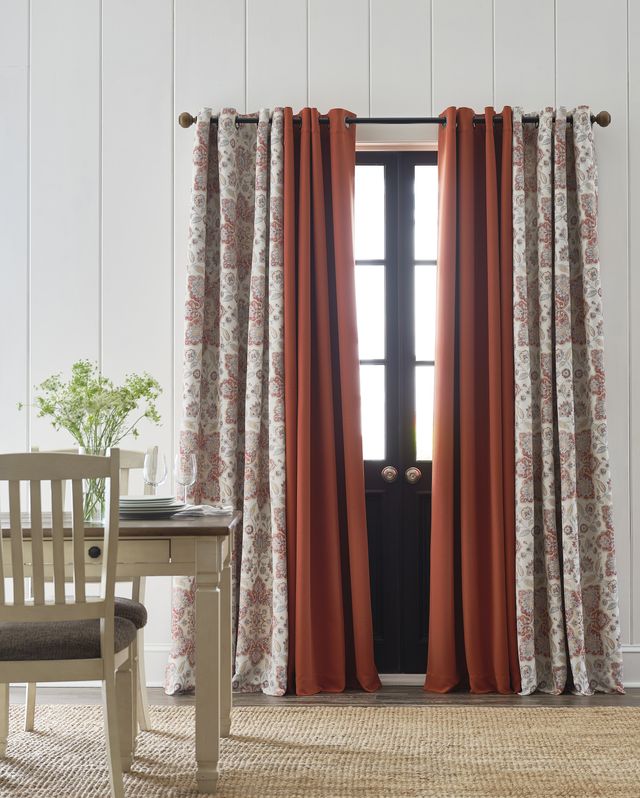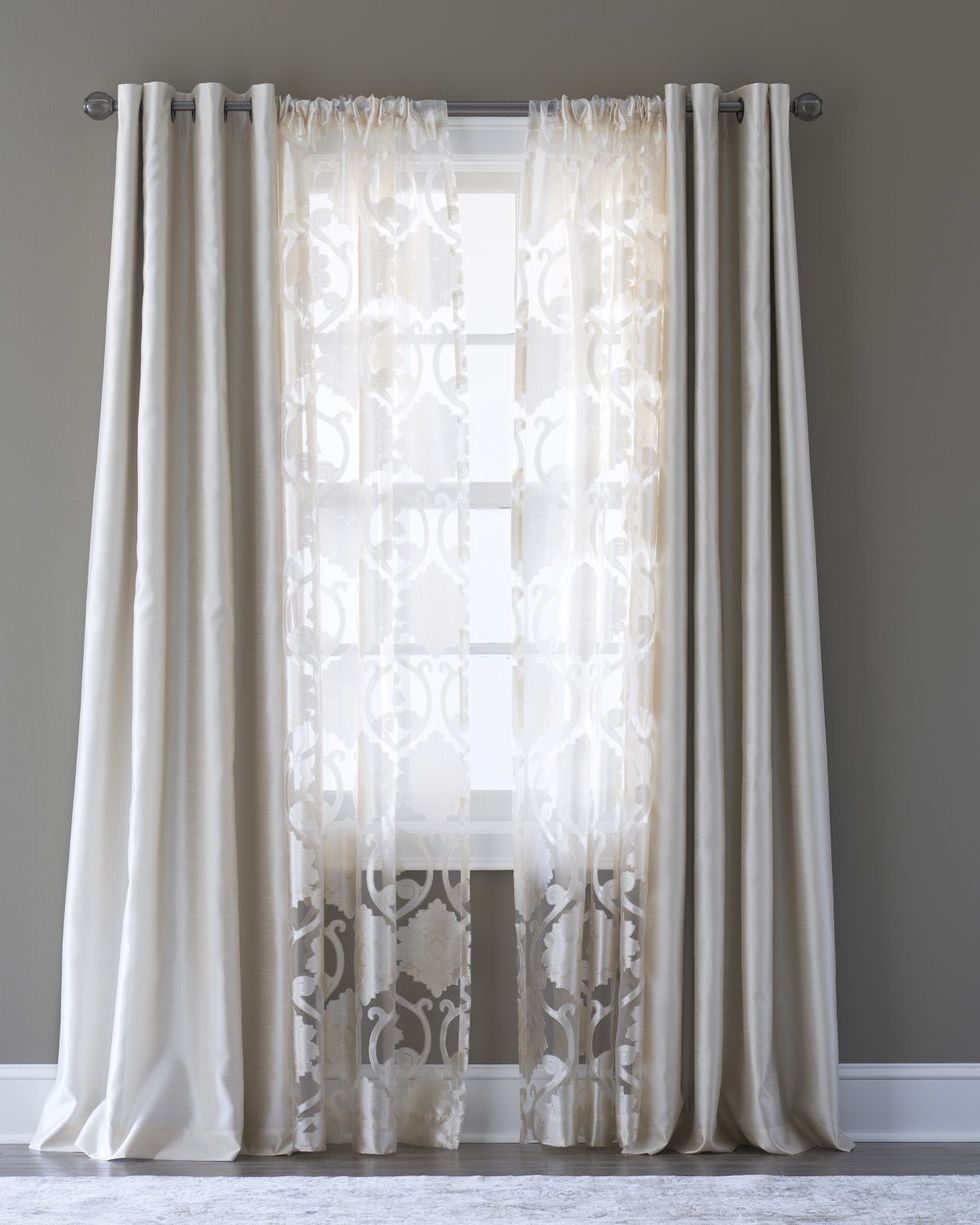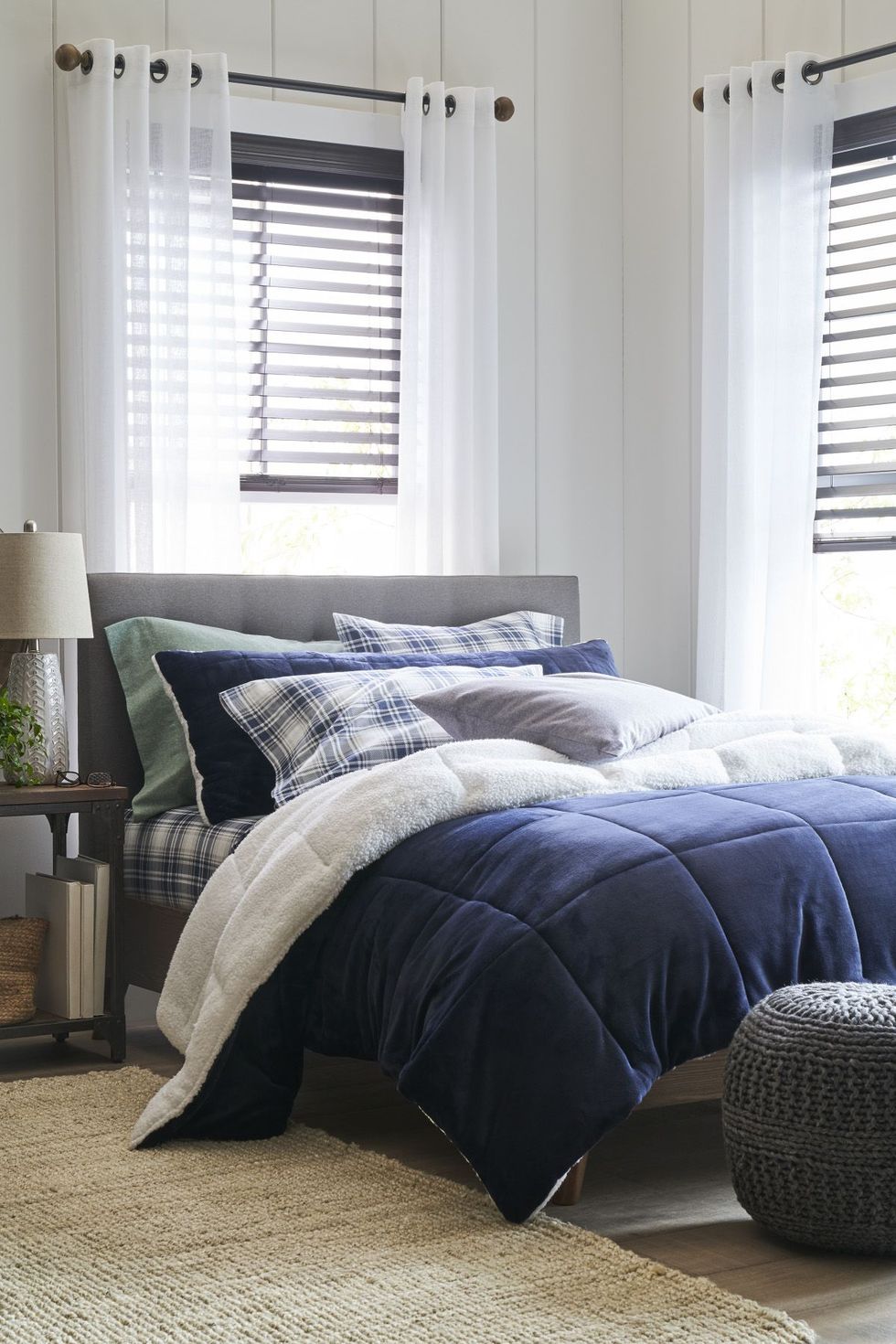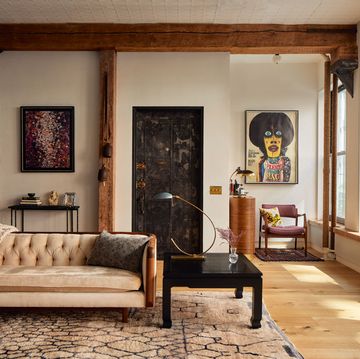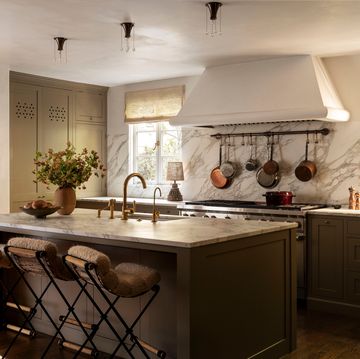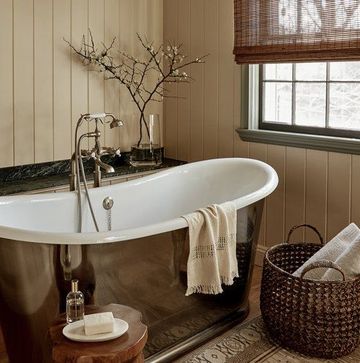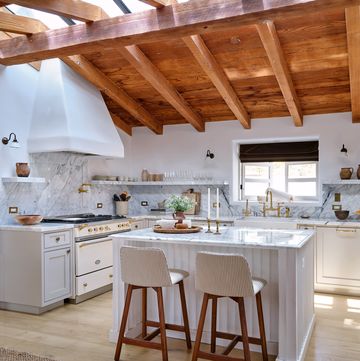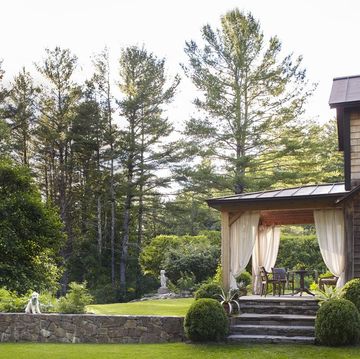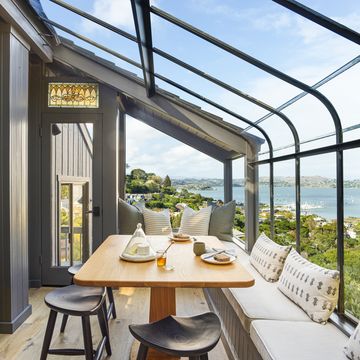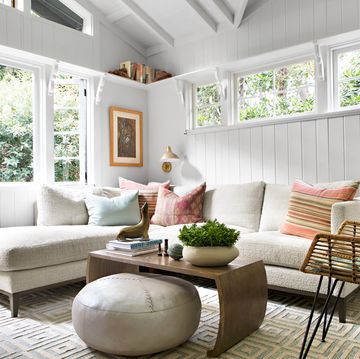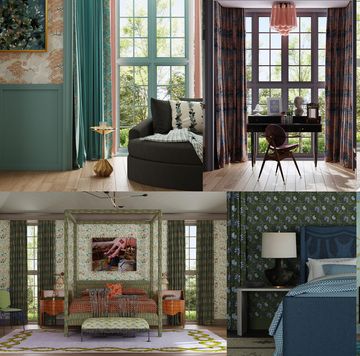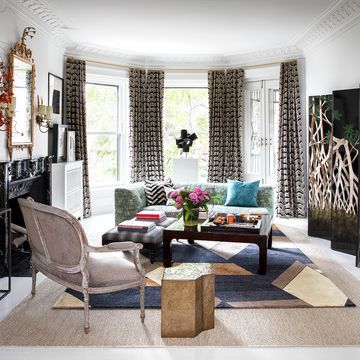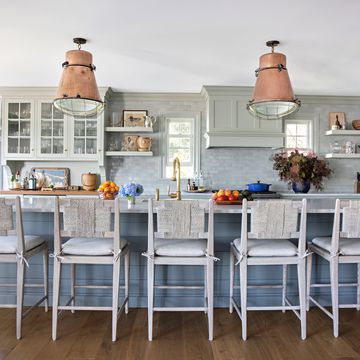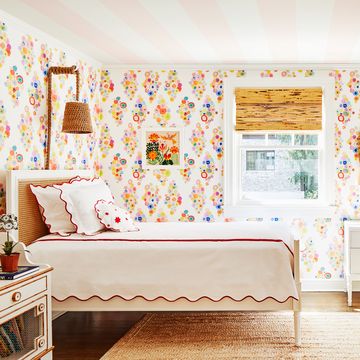Window treatments are like the jackets of interior design: They're often the last thing you add, but they can dress a room up or down. Just like a tailored blazer can lend an element of sophistication or a jean jacket can make a cocktail dress casual, a full drape adds elegance to a room while a simple Roman shade keeps things streamlined.
But that's not to say you should wait until the end of your design process to consider them. You'd build an outfit around your favorite bomber jacket, right? Well, you can do the same with your treatment.
“Window treatments aren’t the icing on the cake, they’re one of the ingredients going in the cake,” says Seattle-based interior designer, LeeAnn Baker. “When we’re starting the design of a room, we’re really stepping back and looking at it as a whole and thinking about what it will take to create a unified vision for it; window coverings play a big role in a room’s unity.”
To help you choose the right treatments for your home, we partnered with JCPenney—which offers every window treatment under the sun—and tapped into Baker’s 20-plus years of expertise. Here, she shares five do's and don'ts of dressing your windows like a pro (plus, how to shop the perfect picks).
First, a refresher on treatment types
You're forgiven if you don't know the difference between drapes and curtains (and yes, there is a difference). Here's a brief rundown of the vocab you should arm yourself with before shopping for window treatments:
Drapes: Generally, drapes are floor-length fabric panels with a backing that gives them structure. They hang on a rod attached to the wall and create a more formal look.
Curtains: Offering a more relaxed style, curtains typically drop below a windowsill and are of a lighter fabric that can move in the breeze, though sun-blocking curtains are common as well. Like drapes, they hang from a rod.
Shades: Also made of fabric, shades are attached to a rod or frame at the top, and there's a lifting mechanism (usually a cord) that raises the panel to let light in. As the fabric raises, it will either roll around the rod at the top or bunch into a neat stack, depending on the style.
Blinds: Like shades, blinds are attached to a frame at the top and also have a lifting mechanism. However, instead of fabric, they're made of hard slats or louvers that tilt to let light in. You can find them in an array of materials, such as bamboo, plastic, wood, aluminum, or vinyl.
DO: Choose length based on function and style
Generally, a longer fabric panel creates a more formal—and less functional—look. So consider how often you'll be opening and closing the treatments in any given room before deciding on a length.
Is it a bedroom where you want to block light during the night but let sunlight in during the day? Is it a dining room where the drapes will be more decorative than functional? Or is it a playroom where floor-length fabric would get in the way?
Baker prefers floor-length drapes to create a custom look. A puddle-style drape, where a few inches of fabric "puddles" on the floor, adds a heavier look when used with thicker drapes. But with sheer fabric, it creates an element of coziness. The bigger and heavier the drape, the more formal the look. That said, a substantial puddle drape can also help with heating and cooling loss.
One important thing to note: If you're opting for floor-length drapes, always hang them two inches from the ceiling or four inches above the window molding to make the room appear larger than it is.
DO: Use sheer fabrics to add layers
On their own, sheer drapes or curtains add lightness to a room, allowing sunlight to gently filter through a space. But if you need privacy or shade, sheer fabrics are best when paired with a slightly heavier drape.
“When our goal is to filter light on windows that are getting a lot of bright light, sheers are the perfect way for us to go,” says Baker. “And then we also love to use them in other rooms—like for bathrooms or bedrooms, and for a different reason—when you still want light but also would like a bit more privacy.”
Layers also let you easily change the style and function of a room; close the full set for movie night in the family room, or just pull the sheer drapes closed to set the mood for a casual Sunday brunch.
DO: Install blinds when the architecture calls for it
Sometimes, the shape of a space dictates what window treatments you should use. If the architecture of a building doesn't allow for a rod to be hung across the wall—for instance, the room has dormer windows or slanted ceilings, or there's a group of windows around one corner—blinds are typically the best choice.
Baker adds that they may also simply be an aesthetic choice. “Most often, we find ourselves using blinds in rooms where we want to play with light and shadows,” she says. “In a study, thick wood slatted louvers allow for beautiful shadows to fall across the room’s surfaces; it makes for a very dramatic look and adds so much to the mood in the room.”
DON’T: Opt for a different new look in every room
While you don’t want every room to look the same, Baker notes that consistency is important for a home to feel cohesive.
“We like to use similar window treatments throughout the home, playing them up or down depending on the room,” she explains. “For example, we love doing natural woven shades throughout the house for continuity, but then in more formal areas like living rooms and dining rooms, we will add side drapery panels in soft linens or faux silks to dress the rooms up.”
This thinking extends to the color scheme as well; The window treatments need to fit the overall look and feel of the home.
“We’re always thinking about the atmosphere we’re trying to establish and then maintain through each room and every space,” she says. “And so, the color of the window treatments is incredibly important in terms of being consistent throughout the home. It’s surprising how much that consistently adds to the feelings of comfort and ease we have in our homes.”
DON’T: Use floor-length curtains in the kitchen
In a highly trafficked space like a kitchen, long curtains often don't make sense. Instead, go for something utilitarian that won't get in the way, like a Roman shade or a shorter curtain.
“We love to install café curtains so that they’ll sit just perfectly on the windowsill,” says Baker. “It’s such a pretty look for that certain spot like kitchens or powder rooms, where you want daylight but might require privacy.”
If opting for shades, you can change the pleat of a shade depending on the formality of a design. A flat, rolled shade offers a minimalist look, while a classic French pleat is elevated enough to work in most dining rooms.

